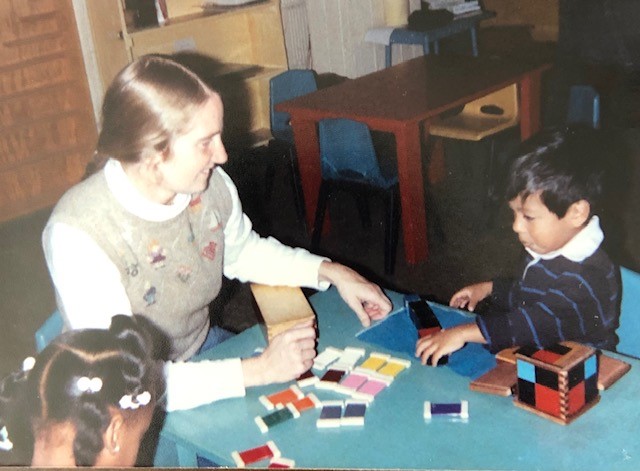Educational services have always been a central part of Jubilee Housing’s mission and program offerings, and a large part of our Justice Housing® model and Jubilee Year principles of Filling Gaps, Breaking Down Boundaries, and Resetting the System. Over the past 50 years, this has taken many forms, with many people following their inspiration and passions to start different programs that have shaped our current Youth Services program and spun off into partner organizations such as Jubilee Jumpstart and Sitar Arts Center. We also work with other partners, such as Martha’s Table, to provide its Healthy Start early childhood programming to the neighborhood at our Maycroft building. This month, we look back at the founding of some of these programs, such as Jubilee Children’s House, Good Shepherd Ministries, and the future of Youth Services with special interviews with Children’s House founder Nona Beth Cresswell, current Director of Youth Services Audrey Walker, and past program participants. Through these programs, Jubilee and its partners promote academic advancement and personal development to empower youth and strengthen opportunities for future success. We believe every person has in them what is needed to live a fulfilling life and that access to opportunities helps surface these inherent gifts. We believe in the self-determination of each person and working in partnership with one another to discover our gifts.
50th Anniversary Stories
Jubilee Children’s House
Q&A with Founder Nona Beth Cresswell
In this Q&A style article, we delve into the rich experiences and profound impact of Nona Beth Cresswell who dedicated her life to nurturing and uplifting children. From her childhood experience in the Church of the Saviour to founding the Jubilee Children’s House, her journey is a testament to the power of gifts, faith, and community.
Tell us about your experience with the Church of the Saviour and Dayspring Silent Retreat Center owned by the church in Germantown, Maryland.
I had the great fortune of being born into the Church of the Savior because my parents were founding members. They learned about the church as young adults right after World War Two and resonated with the ideas of Gordon and Mary Cosby and others. They joined the church, but then they moved back to the South. They were from Mississippi, and my father was still in the army and got relocated. Then, I was born. My three younger siblings were born in Mississippi. When I was five or six, they were planning to come back to Washington, DC to be part of the church. When I was six years old in first grade we moved back.
The church was a huge part of our lives, especially the community here, the love, and the care of many adults. We got together at Dayspring [a retreat center purchased and operated by Church of the Saviour in Montgomery County] every weekend. That was our Saturday thing to come to Dayspring and be with everyone in the community. We would have lunch together and then we would play softball or volleyball or go for a hike in the woods. There would always be something fun to do.
In my experience in the Church of the Savior, there was all this community life that we shared, and we got to know people who were on a serious walk with God of genuinely seeking guidance and growth in the spiritual life. When you become a member, part of it is that you have daily times of prayer and seeking. So, we were with people all the time who were trying to do this and were very honest about it, too. They would talk about failures or how somebody in the community might help them reach out or they would feel something from God. We were just surrounded by that kind of atmosphere. As children, we were aware of the commitment of the adults around us. This was combined with much love from the adults. People were interested. If they knew you had interests, they would ask you about them. For me, they asked what I was doing with music. From a very early age, I loved music, and I loved singing. Gymnastics was another thing at one point. They were encouraging and they seemed to care about us. We had a lot of fun together.
At Dayspring and in church, there was a lot of laughter and joy. That is a tremendous gift to us.
What do you believe is your calling in life?
I want to talk about the church’s emphasis on gifts. It is the belief that God gives each person gifts and my gifts are not the same as yours. We all have some unique and some we share. That was our encouragement to nurture your gifts, to be grateful, and to want to use them in the world to share God’s love.
Because of my church background and how deeply it involved me, I would say that my calling in life is sharing God’s love. A way of doing that is helping people to experience it, to hear of it, to know of God’s love, and to realize that God made each one of us with gifts to thrive, to share, and to continue to share. That’s love. I feel like that was the undergirding of what I have been doing. With the children, it was for them to realize their potential. The other thing I often say is I feel that I’m a midwife for other people’s dreams. What I mean is that I encourage people to go after their dreams and to seek support to do so. If you feel called to do something, trust that and trust God.
How did your experience in the Church of the Saviour shape your calling and ignite your passion for working with children?
As a young teen, I started babysitting. I babysat for people in the church like Terry Flood, Jubilee Housing’s co-founder. That was a huge experience for me that I think ignited my passion for working with children. I also started helping in Sunday school with the younger children and loved that as well. I realize [that], with babysitting, you wouldn’t necessarily think of church, but Terry Flood [church member and Jubilee Housing co-founder] and her family were especially important. I became aware that I had a gift for children and that I loved working with them, and then that passion grew in other ways.
What was your vision when you founded Jubilee Children’s House, and why did you choose to follow the Montessori Method?
I didn’t know very much about Maria Montessori and her teaching at the time. One of Terry Flood’s children went to a Montessori school. So, I heard a little bit about it then, but it was in college babysitting for another family. One night when I was babysitting, I started reading a book that they had in their house that was by Maria Montessori. It’s called The Child in the Family. There were things about it that made me say, “Yes, yes, yes, this is what I want to do.” I just resonated so strongly with her ideas about children, the respect for a child. I feel that it addresses the whole child’s life, the social, the academic, the way they learn things, but also in the way it’s set up. I feel that it is a wonderful environment for children to be together in, to learn and grow. I love that children learn to take care of themselves, and the environment and they’re encouraged to do so and we’re talking about two, three, four, and five-year-olds.
I thought to myself that I would take the Montessori training because that would be the education. I eventually did and I just thought it was a beautiful program and a wonderful way of being with children. This would have been in 1973, the winter of 73. I applied to the Washington Montessori Institute where they had a training which was in the city. I had not heard back from them when one-night, dear Terry Flood invited me to go to a play that was at the Arena Stage. Then we came to the Potter’s House afterward for dessert and to hang out. I would say, fairly late at night, around 9:30 pm to 10:30 pm. As we were walking from the car to go into the Potter’s house, I was just aware of a lot of young children running up and down the sidewalk. I couldn’t see that they were with adults or older siblings, but they were. At that moment, I felt like a call, like I received a message. And I don’t mean I heard a voice, but this deep feeling of this will be your Peace Corps to work with the children of this neighborhood. And so that’s how I got my call.
I was like twenty-three, twenty-four years old. I wanted Jubilee’s Children’s House to be my Peace Corps, and it would be like a little UN because I wanted it to be a real mix of races, economic backgrounds, and languages. I just wanted everyone to feel welcome. For the sake of the children, I wanted them to know people from other socio-economic backgrounds. I hoped that they would start young with those relationships and be together as children can be and just be open and loving and have those experiences early in life. That was my idea.
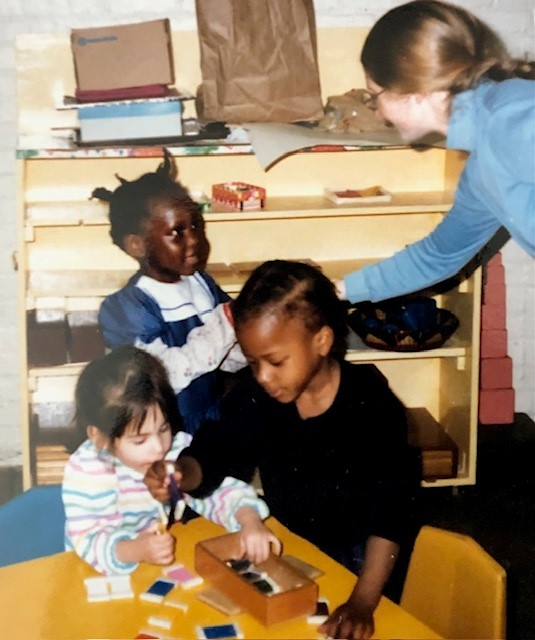
Later, I realized that when Maria started, it was in the basement of some apartment buildings that had been built for low-income tenants and that she was asked to come and do something for the young children who had not gone to school yet. I felt like I was following in her path with Jubilee Children’s House. It just seemed to go together, and I had great inspiration from her life and her work.
With the Montessori Method, there are different areas of learning like a math area, a science area, or something called practical life, which is learning how to tie your shoes and wash things. Every activity is very much hands-on and lends itself to conversation, to working with other people, and to sharing. The method had such a way of bringing everything together in a very natural way. The environment was made for the children entirely and worked around their needs and their lives. It would build self-confidence, which is so important, and their physical development and balance. In the classroom, there was an area where the children could choose to work with those materials, like math or reading. It was just part of the environment that we had. The Montessori Method just encapsulated everything I thought. The longer I worked with Montessori, the more I loved it.
What are your favorite memories from your time at Jubilee Children’s House?
Nature was really important. I brought the children to Dayspring every spring and every fall. Two winters we were able to go there. One winter wasn’t as much fun because it was cold, but the time was still so fantastic. There had been a lot of snow and there was still mud on the ground. The pond had frozen. The kids were able to sled down the hill and across the pond. It was so cool. I thought it would give me a heart attack, but we knew it was solid and it was fine, but I thought I had to be young to do that.
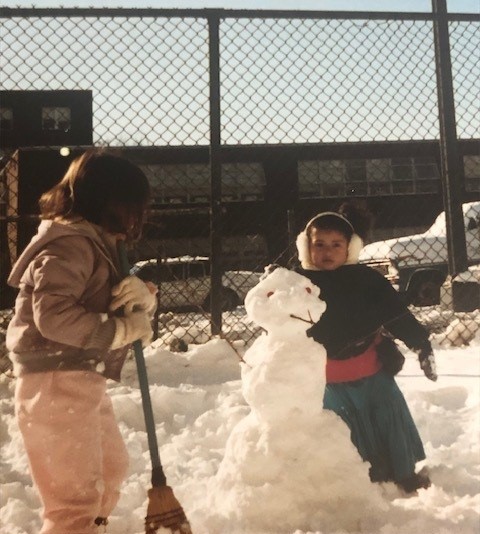
It was so fantastic for them to come to Dayspring, and to just run, climb trees, play and be in nature. They could see turtles and other critters like chipmunks and squirrels. The freedom to be at Dayspring was an important part of our yearly curriculum.
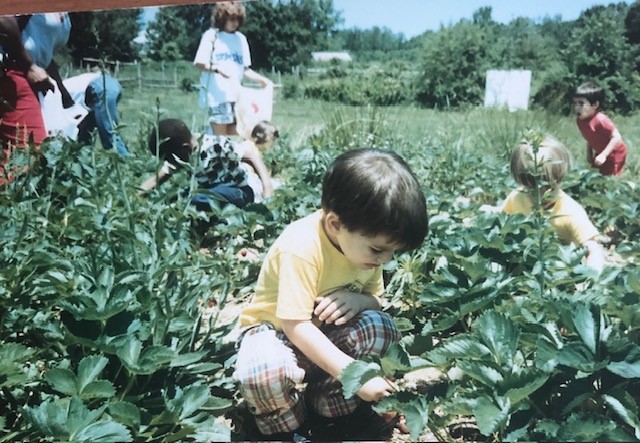
Another time we didn’t get to Dayspring, but we got cardboard, and we slid down hills where we could find them in DC.
How did you first become involved with Jubilee JumpStart, and what motivated you to serve as a Board Member?
The Jubilee Children’s House lasted about 18 years, until 1993. Right after, I joined the Peace Corps. I had this longing to go to a completely different culture and have that experience, which was part of what I had wanted to do back when I was thirteen or fourteen years old when the Peace Corps was founded. So, I finally did that. I was in my mid-forties at the time. I returned home after three years of service. What had been going on in the church while I was away was that Marian Wright Edelman had started attending church and sharing. At this time, she had already founded Leave No Child Behind. The week I came back, there was a big weeklong conference with Leave No Child Behind. There were all kinds of workshops about things her group was doing and advocacy for children. It was such a great time for me to come back to the States and get involved with children again because I feel like they are so important, and they are the future.
There was another man in the church, Joe Collier. He felt the need to start a top-notch early childhood center. What did we call this? Jubilee Jumpstart. He felt very called to that. Since I was interested in that same thing, I joined. He started a mission group around it, but it was just a mission group at first, and we were exploring possibilities of what could work while working with people. It was more like the early stages of trying to see if we could do it. How would we do it? I was part of the mission group. We stopped being a mission group in 2005 and became a board for Jubilee Jumpstart. That’s how it happened. [Jubilee Housing welcomed Jubilee JumpStart to the newly renovated Ontario Court property in 2009.]
It is an incredibly special experience that I have. In the two or three decades between 1975 and the 2000s when we were starting Jubilee Jumpstart, a lot more had been done in early childhood education in terms of certification and qualifications and things like that. Jubilee Jumpstart was able to take the best practices from the years. We found some wonderful teachers and a director. I’ve been very pleased with what they have done. It was different from my school, which was school day hours. Jubilee Jumpstart started early and went late. It started with infants and toddlers, while with Jubilee Children’s House, the youngest children I had were two, two-and-a-half-year-olds. Jubilee Jumpstart was a much bigger operation.
I felt Jubilee Jumpstart was in good hands and I stayed with the board for a long time until I retired.
What do you consider your greatest impact?
I think that the gift I have been given is to build bridges. I feel like such a gift was given to me to be able to get to know people that I wouldn’t otherwise and share life experiences. I mean, there are some tough things that we deal with as well as all the joyful, wonderful, fun ones. I gained so much, a deeper understanding of life and challenges. Then this beauty of being able to share it, to be together in it was important.
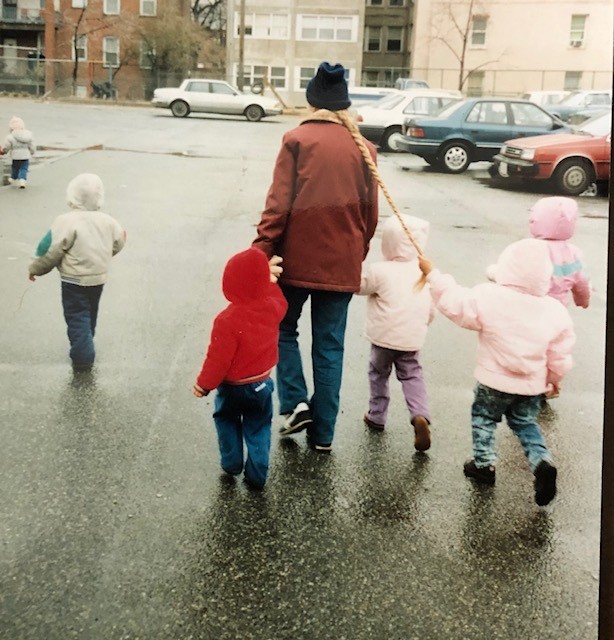
I also would say Jubilee Children’s House. The school was my baby. It was what I gave my life to in a way. The school was the most important thing I ever did. And I’m grateful.
What is one piece of advice you would give to someone aspiring to create a positive legacy in their community?
The one piece of advice I would give is what I was told: just take things one step at a time.

